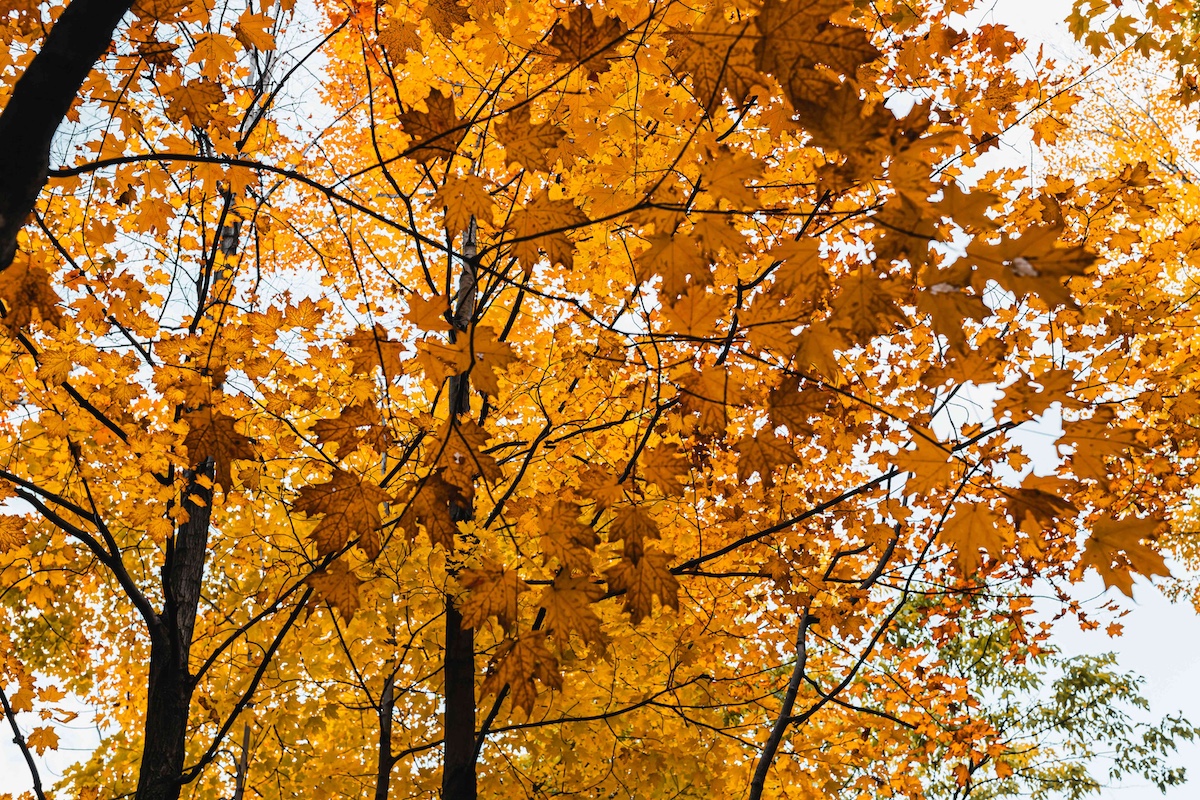The Fascinating Life Cycle of Deciduous Trees: From Leaf to Fall
Deciduous trees are a vital part of our natural world, providing shade, beauty, and ecological benefits throughout the year. These trees are known for their seasonal changes, particularly the dramatic transformation of their leaves. The life cycle of deciduous trees is an awe-inspiring journey that spans through the changing seasons, from the budding leaves of spring to the colorful foliage of fall and the bare branches of winter. In this article, we’ll take a closer look at the fascinating life cycle of deciduous trees, from leaf to fall, and explore the processes that make them such an integral part of the environment.
1. Spring: The Awakening of Life
As winter recedes and temperatures rise, deciduous trees begin their most vibrant phase of growth. The cycle starts with the awakening of the tree after months of dormancy, when it has conserved energy and nutrients. In the spring, trees break their dormancy and begin the process of bud burst.
Bud Development and Leaf Growth
- Bud Burst: As the temperature warms, the tree's buds start to swell. These buds contain the undeveloped leaves and flowers of the upcoming season. When the buds open, new leaves begin to unfurl and reach towards the sunlight.
- Photosynthesis: As the leaves unfold, the tree starts the process of photosynthesis, where it absorbs sunlight, carbon dioxide, and water to produce food in the form of sugars. This energy is used for growth and to fuel the development of flowers and fruits.
Spring is a time of rapid growth for deciduous trees. The leaves are typically bright green during this period, as they contain chlorophyll, the pigment responsible for photosynthesis. This lush growth provides shade and sustenance for various wildlife and helps improve the air quality by absorbing carbon dioxide.
2. Summer: Full Bloom and Energy Production
Once the spring leaves have fully unfurled, the tree enters its most productive stage: summer. During this phase, the tree is focused on maximizing its energy production to support growth, reproduction, and the storage of nutrients for the coming seasons.
Maximized Photosynthesis
- Chlorophyll Dominance: The leaves are at their greenest, filled with chlorophyll that captures sunlight to produce food. The tree channels its energy into growing roots, stems, and new branches, as well as supporting the development of flowers and fruit, if applicable.
- Nutrient Storage: In preparation for the cooler months, deciduous trees begin storing energy in their roots and trunk. These stores of nutrients will be vital for the tree’s survival during the winter months when it is not actively growing.
During the summer months, the tree may also flower, producing pollen and nectar to attract pollinators such as bees, butterflies, and other insects. Depending on the species, the tree may produce fruits or seeds, which are essential for reproduction.
3. Fall: A Season of Transformation
As summer fades and cooler temperatures settle in, deciduous trees prepare for winter by going through a process known as senescence. This is when the tree begins to shut down its metabolic processes, conserving energy and shedding leaves. Fall is a dramatic season for deciduous trees, as their leaves change color and eventually drop to the ground.
Leaf Color Change
- Chlorophyll Breakdown: As temperatures drop and daylight hours decrease, the chlorophyll in the leaves begins to break down, revealing other pigments such as carotenoids (yellow and orange) and anthocyanins (red and purple). This gives rise to the stunning fall foliage that we associate with deciduous trees.
- Nutrient Reabsorption: Before the leaves fall, the tree reabsorbs nutrients such as nitrogen and phosphorus from the leaves, storing them in the trunk and roots for use in the next growing season. This allows the tree to conserve energy and prepare for winter dormancy.
The shedding of leaves is a survival mechanism. By losing their leaves, deciduous trees reduce water loss and prevent damage from snow and ice accumulation on their branches. It also minimizes energy expenditure during the cold months when sunlight is limited.
4. Winter: A Period of Dormancy
Winter is the quiet, restful phase of a deciduous tree’s life cycle. During this period, the tree goes into dormancy, conserving energy and preparing for the upcoming spring season. The leaves are gone, and the tree relies on the nutrients it stored in its roots and trunk during the fall.
Dormancy and Survival
- Reduced Activity: During the winter months, the tree’s metabolic activity slows dramatically. The tree is essentially “sleeping,” with minimal water intake and no active growth. This helps the tree conserve energy, as the harsh conditions of winter are not conducive to growth.
- Protection: The tree’s bark protects it from extreme cold and desiccation. Some species may produce a protective layer of resin or other substances to shield themselves from frost and dehydration.
Although it may appear lifeless during winter, the tree is still alive and functioning at a reduced level. It waits for warmer weather to stimulate its growth cycle once again.
5. The Cycle Begins Again: Spring Awakens
As the days lengthen and temperatures rise again, the cycle of life for deciduous trees begins anew. The stored energy in the tree’s roots is used to fuel the burst of growth that occurs when spring arrives. The buds begin to swell once more, and the tree reactivates its processes of photosynthesis, marking the beginning of another year in the tree’s life cycle.
The Importance of Deciduous Trees in the Ecosystem
The life cycle of deciduous trees is not just fascinating—it plays a critical role in the ecosystem. These trees help to:
- Maintain biodiversity: By providing shelter, food, and nesting sites, deciduous trees support countless species of insects, birds, mammals, and fungi.
- Contribute to the carbon cycle: Through photosynthesis, trees absorb carbon dioxide from the atmosphere, helping to reduce the impacts of climate change.
- Prevent soil erosion: The roots of deciduous trees help stabilize soil and prevent erosion, particularly along riverbanks and slopes.
In addition to these ecological benefits, deciduous trees provide aesthetic value and help maintain the balance of nature in urban and rural landscapes alike.
A Dynamic and Ever-Changing Life
The life cycle of deciduous trees is a dynamic, ever-changing process that moves in harmony with the seasons. From the budding leaves of spring to the colorful transformation in fall, and the quiet dormancy of winter, these trees offer a beautiful and essential role in our natural world. Understanding this life cycle not only deepens our appreciation for these trees but also encourages responsible tree care and conservation efforts, ensuring that these magnificent organisms continue to thrive for generations to come.
Sometimes, removing a tree is the best option for safety and aesthetics. Our Tree Removal services eliminate dead, diseased, or problematic trees with care and precision. Timber TEKS ensures a hassle-free process, protecting your property while improving your landscape. Reach out today to schedule professional tree removal!

























